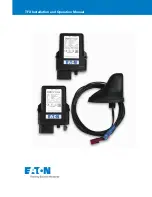
- 1 -
Introduction
The DX Engineering Receive Portable Flag Antenna kit is based on the design by Don Kirk,
WD8DSB. Don’s article on this antenna is published in the March, 2021 issue of QST Magazine.
The Portable Flag has become a real game changer in direction finding of RFI on MF and HF
frequencies, and you will also find it an invaluable tool when hunting RFI due to the following key
features.
Unidirectional (unlike a tuned loop)
Broadband (unlike a tuned loop)
Portable (easy to walk with while direction finding)
Don spent an enormous amount of time tracking down RFI (radio frequency interference), and
typically used tuned loops when tracking down MF (medium frequency) and HF (high frequency)
signals. Tuned loops work great, but they’re bi-directional and therefore the true direction of the
signal is unknown due to the 180 degree uncertainty of its bi-directional pattern. Don had been
considering a tuned loop along with a sense antenna to make his radio noise direction finding
system unidirectional but he felt there must be an easier system to implement. Hence the Receive
Portable Flag Antenna, a terminated loop was born.
Traditionally Flags are large and designed for stationary use,
whereas the idea for this was to design a Portable Flag. The
Portable Flag was designed to be the largest possible (to maximize
gain) that would fit inside a car and it’s still small enough to
maintain a cardioid pattern up through 30 MHz. The portable Flag
has an approximate dimension of 2 feet tall by 4 feet long which
you (or a helper) can easily walk with while tracking down a
signal. Unlike a tuned loop, the Portable Flag is a broadband
antenna with unidirectional properties, and it’s designed for
direction finding from 1.8 to 30 MHz as long as an appropriate
preamp is used. It’s even useful for direction finding down in the
AM broadcast band. The rear of the antenna produces a sharp null
when pointed at the signal of interest and the sharp null is often used for direction finding versus
using the broad peak which occurs when the front of the antenna is pointed at the signal of interest.
NOTE:
This is a
Receive Only
antenna - do
NOT
attempt to transmit through this antenna.
Damage to the loop antenna and/or your transmitter may occur.
Optional Items - not included
A custom designed preamplifier / attenuator is available -
DXE-NL-PRE-ATT-1
.
Anti-Seize for stainless steel hardware: Jet-Lube SS-30
JTL-12555
or Permatex
PTX-81343





























